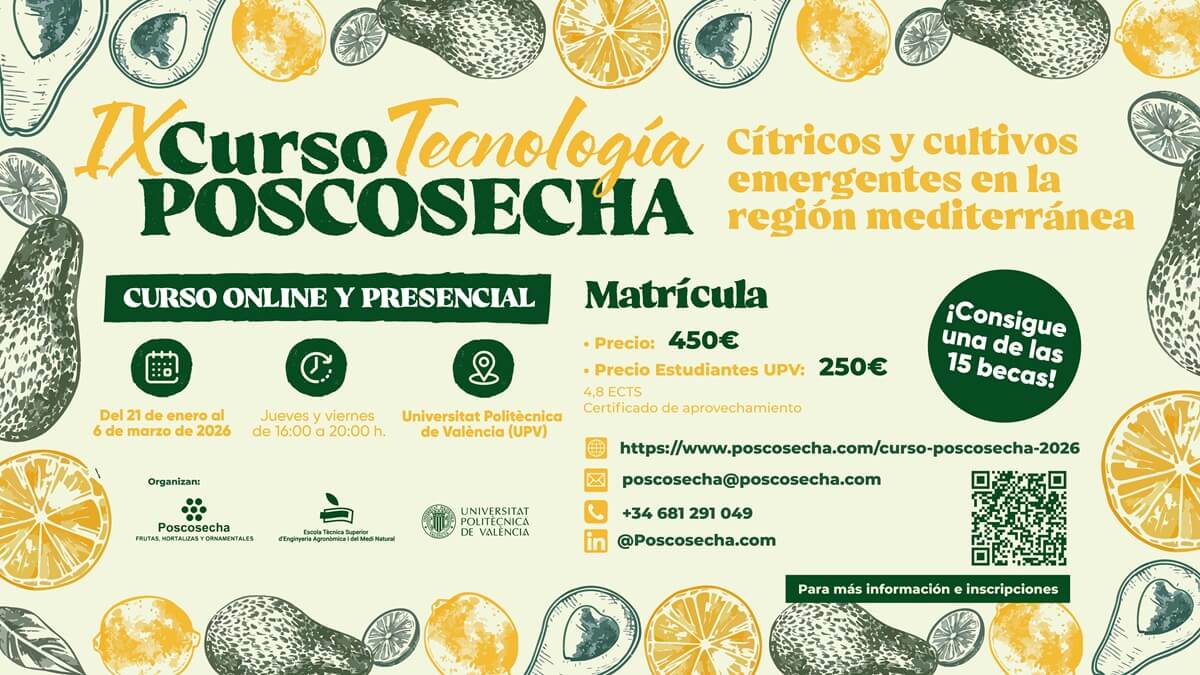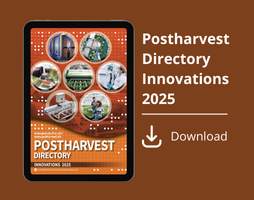News
Three Pillars for a Smart Postharvest: Packaging for Mechanical Protection, Preservation, and Integrated Intelligence Define the Horizon of 2025
Recent scientific studies outline a new paradigm for the postharvest industry — packaging that protects against mechanical stress, preserves fruit physiology, and communicates quality in real time, within a sustainable and circular framework

Mechanical Protection: Structural Design to Prevent Physical Damage
The postharvest handling of fresh produce faces a persistent and costly problem: mechanical damage during harvesting, transport, and storage. Invisible bruising and microlesions caused by impact, vibration, or compression can alter respiration, accelerate ethylene release, and trigger enzymatic browning — often long before any defect becomes visible. These early injuries shorten shelf life, reduce firmness, and compromise commercial quality.
New research highlights packaging as an active system of mechanical protection, engineered to absorb energy and redistribute stress before it reaches the fruit. Hybrid biopolymer materials — reinforced with nanocellulose or modified starch — demonstrate up to 40% higher impact absorption capacity than conventional plastics, while maintaining lightweight structure and ventilation efficiency.
Inspired by biomimetic geometries, such as honeycomb and fractal patterns, these structures mimic nature’s ability to dissipate energy evenly. Combined with finite element analysis (FEA), designers can now simulate the forces acting on fruit during transport and optimize thickness, rigidity, and damping properties for each commodity. The result is a shift from empirical design to predictive packaging engineering, reducing waste and improving consistency throughout the logistics chain.
Active Preservation: Controlling the Fruit’s Microenvironment
Beyond protecting against impact, next-generation packaging also works from within. Active systems are capable of modifying the internal atmosphere by regulating oxygen and carbon dioxide levels, absorbing ethylene, or releasing antimicrobial compounds in a controlled way.
This precise microenvironmental control extends firmness, preserves color and aroma, and delays physiological aging. In fruits particularly vulnerable to softening — such as berries, peaches, or tomatoes — active films reduce respiration rate and moisture loss, improving both sensory quality and shelf life.
At the same time, the transition toward biodegradable, plant-based materials supports environmental goals, aligning packaging innovation with circular economy principles. Active preservation thus bridges performance and sustainability — maintaining product quality while minimizing the ecological footprint of postharvest systems.
Integrated Intelligence and Circularity: The Communicative Package
The third pillar of the new postharvest paradigm is integrated intelligence. Packaging is becoming a data-driven tool that can sense, record, and communicate the condition of the product in real time. Embedded sensors, freshness indicators, RFID tags, and QR codes monitor temperature, humidity, and gas composition throughout distribution.
This digital traceability allows producers and distributors to make informed decisions — such as rerouting shipments, prioritizing lots, or adjusting cold-chain conditions based on real physiological status rather than harvest date. By turning packaging into an information node, the system connects physical protection and preservation with continuous quality monitoring.
Equally important is the principle of circularity: packaging is now designed to be recyclable, reusable, or biodegradable without sacrificing function. The convergence of mechanical protection, physiological preservation, and digital intelligence defines a new generation of postharvest solutions — active, intelligent, and sustainable packaging that safeguards both fruit quality and environmental integrity.
References
- de Oliveira, M. M., Lago, A., Pinto, N. G. M., de Oliveira Araújo, C., & Velho, J. P. (2025, October 6). Systematic review of innovations in food packaging with a focus on circularity and the reduction of food loss and waste. Discover Applied Sciences. https://doi.org/10.1007/s42452-025-07788-3
- Du, L., Huang, X., et al. (2025). Application of Smart Packaging in Fruit and Vegetable Preservation: An Overview. Foods, 14(3), 447. https://doi.org/10.3390/foods14030447
- Hao, J., Qiao, P., Wang, J., Wang, M., Li, Z., & Tang, W. (2025, October 10). Advanced packaging technology for fresh fruit: From mechanical protection and preservation to intelligent monitoring. Trends in Food Science & Technology, 166, 105369.
Related news



.jpg)








